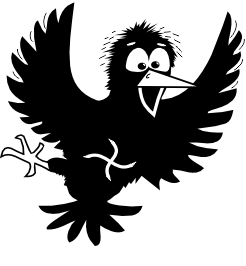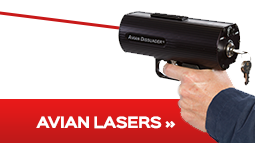Why Pyrotechnics?
Pyrotechnics may be the singularly most effective mitigation measure available for dispersing birds and wildlife. Wildlife damage specialists employ a variety of techniques to reduce damage, protect health and safety, control vectors, and save money. Birds and wildlife can cause damage to crops, spread disease, cause environmental damage, and threaten aviation safety. Integrated and adaptive management programs depend on an arsenal of equipment and techniques to help reduce risks in each of these areas. A significant area of concern is the threat hazardous birds and other wildlife pose to safe airport and aircraft operations. Billions of dollars in damages to aircraft to include catastrophic losses and more importantly, potential injuries and fatalities to aircrew and passengers are recorded worldwide each year.
Airports employ a wide variety of measures to help mitigate risks to aviation safety. Habitat management and exclusionary devices form the basis of these programs, but wildlife are frequently present even after these measures have been employed. When this occurs, airport managers must immediately respond to deter birds and other wildlife from occupying airfields using active measures to harass and dissuade them. Paramount among these is the judicious use of pyrotechnics. Pyrotechnics used for bird and wildlife harassment produce a variety of sounds, flashes, reports, trailing smoke, and other stimuli that effectively frighten most problem species. Reed-Joseph offers 15 mm Bird Banger, Bird Banger EXP, and Screamer Siren cartridges, long-range CAPA , and 12 gauge Shellcrackers for such use. Wildlife damage specialist should have these available for properly equipped and trained personnel to mitigate risks.
Why are pyrotechnics so effective? There are a number of reasons. First, diversity and intensity of techniques promotes effectiveness by preventing wildlife from becoming habituated to any particular device. Since there are various types and applications available, they lend themselves to a diverse response. Pyrotechnics can also be used by skilled personnel to disperse birds and other wildlife in desired directions and away from areas where they pose risks. Importantly, the operator can discriminately use them in locations and at times when they can successfully move targeted wildlife. While an operator is required to launch the devices, the ultimate effect occurs well away from the person with distances varying from 50 to 125 feet for Bird Bangers, 250-300 feet for Screamer Sirens, more than 200 feet for 12-gauge Shellcrackers to nearly 1000 feet for our specialized 18.2mm CAPA rounds. The ultimate expenditure of the cartridge at such distances affects birds and other wildlife by causing great confusion as they often cannot locate the source of the disturbance. Pyrotechnics also produce a “training effect” where wildlife learn to avoid areas where they are constantly being harassed and prevented from feeding, loafing, or nesting. Long-lived species may carry this effect over seasons or years after being disturbed with the effective use of these devices. Persistently harassed wildlife even learn over time to avoid the specific person or vehicle used to approach with the equipment, and may disperse without firing many, or sometimes any, rounds.
Care must be exercised when using pyrotechnic devices, as they can cause injury or hearing loss to personnel and may pose a fire hazard in dry or windy conditions. Personal protective equipment should always be worn, and fire extinguishers should be on hand, when using pyrotechnics.
It is important to properly use pyrotechnics so as not to cause habituation over time. Reinforcement by integrating other techniques is also recommended to prevent habituation. The use of remotely detonated propane canons, bioacoustics, or other frightening devices in combination with pyrotechnics will make your bird and wildlife mitigation program more effective. As a relatively cheap, highly discriminatory, and demonstrably effective option, pyrotechnics are an essential part of virtually any bird and wildlife control application.







